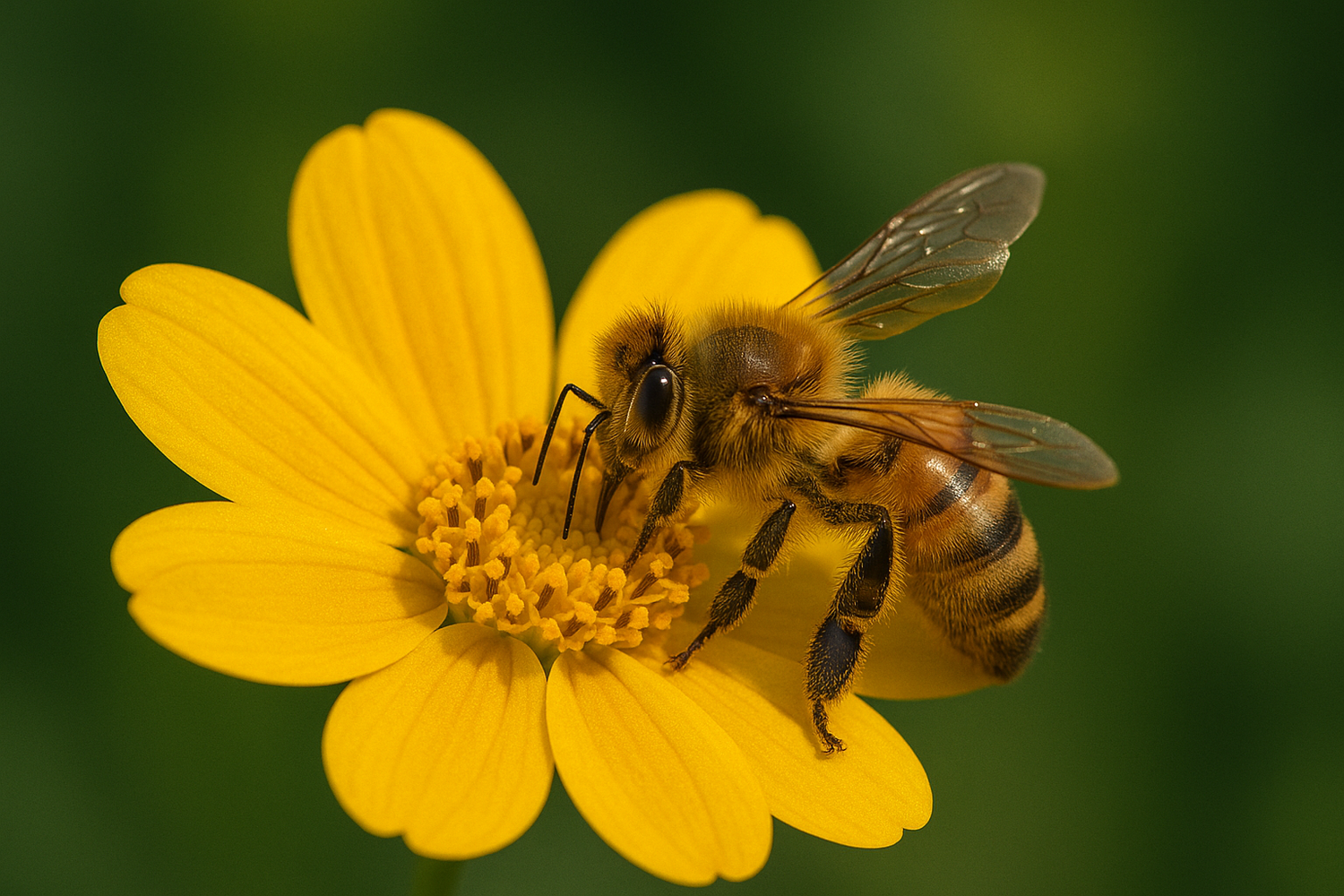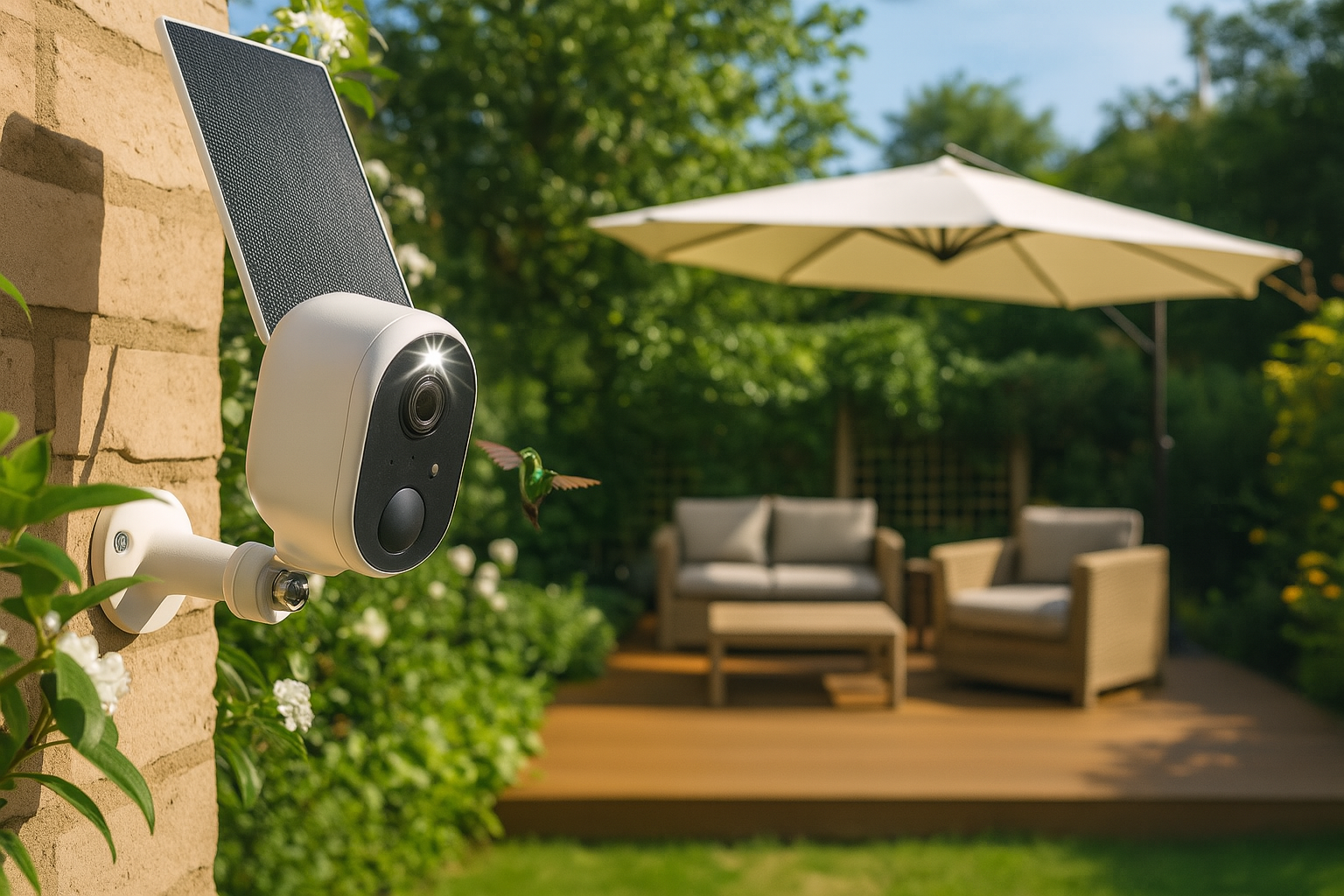Bees are a vital part of our ecosystem, but when it comes to hummingbird feeders, they can become an uninvited nuisance. Many feeders claim to be bee-proof, but in reality, few truly are. At Cabay, years of hands-on experience with different feeders—and close observation of hummingbirds and bees—have taught us what truly works. In this article, we’re sharing our best tips to help you keep bees away from your hummingbird feeders.
Not All Feeders Are Bee-Proof
Let’s get one thing clear right away: most hummingbird feeders you find in stores are not actually bee-proof. Some of the hummingbird feeders work great for hummingbirds, but the holes are just big enough that bees can almost get their heads inside. When bees are swarming, they’ll find it—and once they do, it’s difficult to get rid of them. Espeicially during bee season, bees usually swarm when flowers are scarce or the weather is bad, and they’re on the hunt for food. Sugar water becomes a top priority for them.
The Truth About Bees and Sugar Water
Before moving further, let’s clear up a common myth: bees do not contaminate the sugar water. That’s the ants’ job. However, hummingbirds don’t like feeding around bees. People wouldn’t want to either, and neither do they.
So, while bees may not spoil the nectar, their presence alone is enough to scare off your regular feathered visitors. That’s reason enough to take preventative steps.

The Feeder That Really Keeps Bees Out
The key feature of hummingbird feeder that it really keeps bees out is: it has extremely narrow feeding slits—so small that bees simply cannot enter. Bees and hummingbirds have very different feeding anatomy. Bees have short mouthparts and can generally only reach about a quarter of an inch into a flower or feeder port. Hummingbirds, on the other hand, have long, specialized beaks and tongues that can reach between one to one and a half inches into a flower or slit. That’s a huge advantage when it comes to designing bee-resistant feeders.
This is why the slit-style opening is so effective. The slit must be placed far enough from the nectar reservoir and angled or shaped in such a way that a bee’s limited reach can’t get to the liquid. A hummingbird, however, can easily access it. Even if the slit appears narrow to the human eye, a hummingbird’s beak will slip right in and its tongue will extend deep enough to sip nectar with ease.
Another critical detail is the “lift” built into the feeder's flower-shaped ports. This is the small vertical distance between the outer surface and the location of the nectar. A properly designed flower port keeps the nectar at least half an inch away from the opening. Since bees can only reach about a quarter inch, this small design element makes a big difference. They simply can’t access the food, and after a few failed attempts, they give up.
Material and Build Quality Are Important
Bees can be shockingly determined. We’ve actually seen them chew through thin plastic feeders before! Avoid any feeder that has seams or thin materials that could allow bees to break through over time. Thick, seamless plastic is best.
Also, avoid feeders that swing too much in the wind. Movement can cause nectar to spill, which immediately attracts bees. Consider placing your feeder on a steady pedestal if wind is a problem in your area.
Tricks and Alternative Solutions
Here’s a strange but sometimes effective trick: if you find a dead bee in your garden, place it gently on your feeder. Other bees may see it and decide it’s unsafe to approach. This doesn’t work all the time, but it’s a harmless experiment worth trying.
Another strategy is to provide an alternative food source for the bees. Set out a shallow dish of sugar water with a few stones inside for them to land on. They’ll often choose the easier, safer option if it’s available.

Final Tips to Keep Bees Away
To summarize, here are the most important points to remember if you want to keep bees off your hummingbird feeder:
- Choose feeders with small, narrow feeding slits
- Look for flowers with proper “lift” to block bee access
- Avoid feeders with large, exposed holes or thin plastic
- Don’t let feeders swing or leak
- Keep your feeders clean and mold-free
- Provide bees an alternative food source
- Try using a decoy dead bee to scare them off
A Recommended Choice: Cabay
If you're unsure how to select a hummingbird feeder that meets the above criteria, I recommend trying Cabay's smart hummingbird feeder. Its design effectively prevents bees from accessing the nectar. Additionally, Cabay's smart feeder is equipped with a high-definition camera, which can record everything around the feeder and identify each visiting hummingbird. For more information about Cabay's feeders, feel free to visit Cabay's official website.
With the right feeder and setup, you’ll be able to enjoy hummingbirds without the buzzing competition of bees. Trust me—your hummingbirds will thank you for the perfect environment you’ve created for them. And in return, you’ll enjoy a beautifully elegant birdwatching experience.





Leave a comment
This site is protected by hCaptcha and the hCaptcha Privacy Policy and Terms of Service apply.